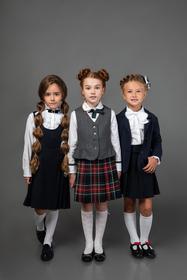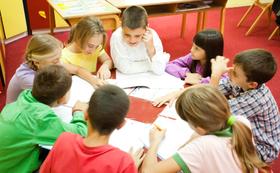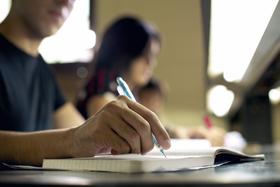Serving 383 students in grades Prekindergarten-5, Indian Hollow Elementary School ranks in the bottom 50% of all schools in Virginia for overall test scores (math proficiency is bottom 50%, and reading proficiency is bottom 50%).
The percentage of students achieving proficiency in math is 55-59% (which is lower than the Virginia state average of 68%). The percentage of students achieving proficiency in reading/language arts is 50-54% (which is lower than the Virginia state average of 69%).
The student-teacher ratio of 15:1 is higher than the Virginia state level of 14:1.
Minority enrollment is 20% of the student body (majority Hispanic), which is lower than the Virginia state average of 56% (majority Black).
Quick Facts (2025-26)
- Grades: Prekindergarten-5
- Enrollment: 383 students
- Student-Teacher Ratio: 15:1
- Minority Enrollment: 20%
- Overall Testing Rank: Bottom 50% in VA
- Math Proficiency: 55-59% (Btm 50%)
- Reading Proficiency: 50-54% (Btm 50%)
- Science Proficiency: 30-39% (Btm 50%)
- Source: National Center for Education Statistics (NCES), VA Dept. of Education
School Overview
Indian Hollow Elementary School's student population of 383 students has declined by 9% over five school years.
The teacher population of 26 teachers has stayed relatively flat over five school years.
Grades Offered
Grades Prekindergarten-5
(Primarily virtual)
(Primarily virtual)
Total Students
383 students
Gender %
Total Classroom Teachers
26 teachers
School Calendar
School Mascot
Hollow Hornets
School Rankings
Indian Hollow Elementary School ranks within the bottom 50% of all 1,773 schools in Virginia (based off of combined math and reading proficiency testing data).
The diversity score of Indian Hollow Elementary School is 0.35, which is less than the diversity score at state average of 0.72. The school's diversity has stayed relatively flat over five school years.
Overall Testing Rank
#1432 out of 1773 schools
(Bottom 50%)
(Bottom 50%)
Math Test Scores (% Proficient)
55-59%
68%
Reading/Language Arts Test Scores (% Proficient)
(20-21)50-54%
69%
Science Test Scores (% Proficient)
(20-21)30-39%
59%
Student-Teacher Ratio
15:1
14:1
American Indian
n/a
n/a
Asian
1%
8%
Hispanic
11%
19%
Black
2%
22%
White
80%
44%
Hawaiian
n/a
n/a
Two or more races
6%
7%
All Ethnic Groups
Eligible for Free Lunch
70%
55%
Eligible for Reduced Lunch
5%
2%
School Statewide Testing
School District Name
Source: National Center for Education Statistics (NCES), VA Dept. of Education
School Notes
- School Mascot: Hollow Hornets
Profile last updated: 02/09/2025
Frequently Asked Questions
What is Indian Hollow Elementary School's ranking?
Indian Hollow Elementary School is ranked #1432 out of 1,773 schools, which ranks it among the bottom 50% of public schools in Virginia.
What schools are Indian Hollow Elementary School often compared to?
Indian Hollow Elementary Schoolis often viewed alongside schools like Bass-hoover Elementary School, Greenwood Mill Elementary School by visitors of our site.
What percent of students have achieved state testing proficiency in math and reading?
55-59% of students have achieved math proficiency (compared to the 68% VA state average), while 50-54% of students have achieved reading proficiency (compared to the 69% VA state average).
How many students attend Indian Hollow Elementary School?
383 students attend Indian Hollow Elementary School.
What is the racial composition of the student body?
80% of Indian Hollow Elementary School students are White, 11% of students are Hispanic, 6% of students are Two or more races, 2% of students are Black, and 1% of students are Asian.
What is the student-teacher ratio of Indian Hollow Elementary School?
Indian Hollow Elementary School has a student ration of 15:1, which is higher than the Virginia state average of 14:1.
What grades does Indian Hollow Elementary School offer ?
Indian Hollow Elementary School offers enrollment in grades Prekindergarten-5 (Primarily virtual).
What school district is Indian Hollow Elementary School part of?
Indian Hollow Elementary School is part of Frederick County Public Schools.
School Reviews
2 10/10/2025
My son started Kindergarten this 2014-2015 school year..very quick to pick out the negative stuff,not so much on the positive.. my son scored an 86 out of 102 best, in the fall, at the beginning of the school year. yet every report card says he doesn't pay attention,follow directions,or work well independently. He can read at his level,he knows and demonstrates every lesson he has learned in school and is a whiz at math. Unfortunately,I have to keep him there and can't afford private school right now. Also,if your kid does something small that's wrong,they use you as an example and destroy your kid's confidence and social skills.. My son HATES this school so much,that he cries when he comes home..I was warned not to send him..I really wish I hadn't.. Sincerely, the unsilent majority.
Review Indian Hollow Elementary School. Reviews should be a few sentences in length. Please include any comments on:
- Quality of academic programs, teachers, and facilities
- Availability of music, art, sports and other extracurricular activities
Recent Articles

Public School Open House & Enrollment Season Guide
A parent-focused guide to the public school open house and enrollment season, with expert questions, timelines, and decision tips.

School Supply Budget 2026: Fees, Books, Tech Costs
School Supply Budget 2026 guide for parents, covering fees, textbooks, technology, and hidden extras to plan ahead.

Education Funding in America (2025 Update)
Comprehensive 2025 update on public school funding in America, new federal and state policies, per-pupil spending, and equity challenges.





